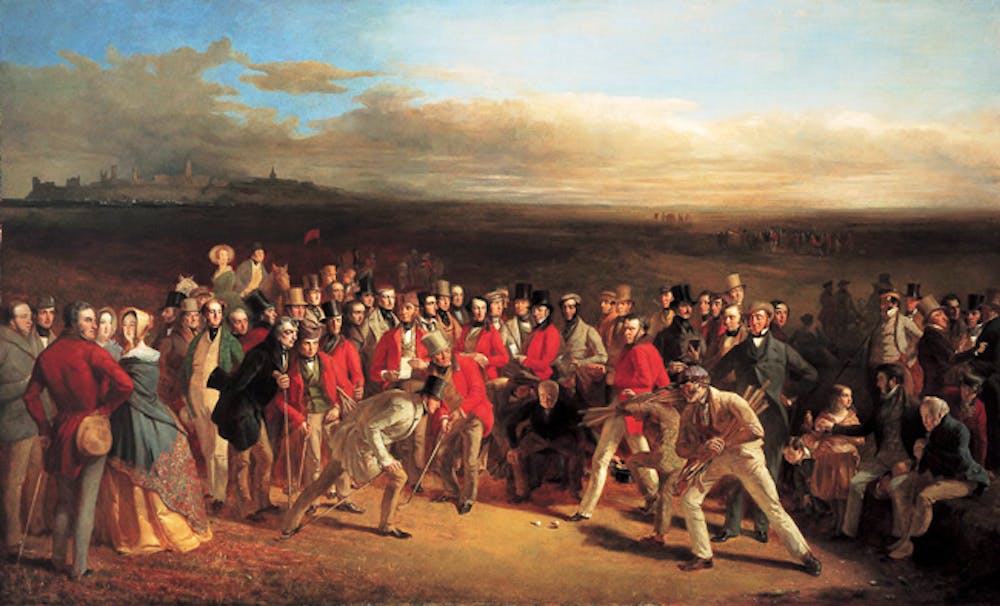At the Philadelphia Museum of Art, golf balls and clubs are about the last thing you'd expect to see displayed. Nevertheless, "The Art of Golf" makes sure you won't miss out.
Enclosed in a room of the museum’s collection of traditional 18th century British and Scottish art, this special exhibition is centered around one painting: “The Golfers” (1847), an iconic work by Scottish painter Charles Lees (1800–1880). The centerpiece, from which all the other paintings in the exhibition stem, depicts a rabble of men around a golf hole. A group of onlookers await the fate of the shot. Against a hazy Scottish landscape, a few women in full Victorian dresses flirt.
“The Golfers” is Charles Lees’ only claim to fame. Specializing in sporting and recreational subjects, Lees enjoyed depicting realistic representations of fellow Scots either curling or playing golf, showing them mid–action or grouped in chatter. He is also noted for his extensive traditional portraiture, which the exhibition showcases in a collection of numerous detailed oil sketches capturing the full descriptive personalities of his subjects—five o’clock shadows, tiny wrinkles, weary eyes and all. His mastery of traditional painting led to his enrollment in the Royal Scottish Academy in 1830, a prestigious contemporary Scottish art organization.
Lees’ descriptive oil sketches and studies for “The Golfers” fill up the remaining space in the exhibition room. We see the very painterly strokes and behind–the–scenes planning that went into his masterpiece. These smaller pieces stretch the snooty social notion of the popular, aristocratic men—some famed golfers and some notable caddies—across the space. Though a placard describes golf as “a game of considerable passion,” tracing back to when kings and commoners alike partook in the sport, there’s little of the ordinary in these paintings. Each man is decked out in flashy regal attire that corresponds to his golfing society. The exhibit even showcases one society member’s jacket, which looks a bit like the notorious red coats of the British military. Also on display is a huge metal golf club bejeweled by clustered balls. The piece was a trophy for victors among the societies and is a princely prize.Even if you know nothing about golf, you'll benefit from learning more about the sport at the Philadelphia Museum of Art. This is, decidedly, the frattiest exhibit the PMA has ever run and it's arrived just in time for spring. The next time you find Penn's gentlemen trolling Locust in matching gold–buttoned blazers and snarky smirks, you'll know where it all began.
Grab your balls.







